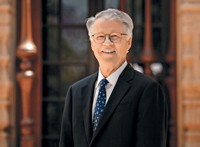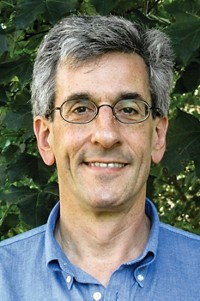Advertisement
Grab your lab coat. Let's get started
Welcome!
Welcome!
Create an account below to get 6 C&EN articles per month, receive newsletters and more - all free.
It seems this is your first time logging in online. Please enter the following information to continue.
As an ACS member you automatically get access to this site. All we need is few more details to create your reading experience.
Not you? Sign in with a different account.
Not you? Sign in with a different account.
ERROR 1
ERROR 1
ERROR 2
ERROR 2
ERROR 2
ERROR 2
ERROR 2
Password and Confirm password must match.
If you have an ACS member number, please enter it here so we can link this account to your membership. (optional)
ERROR 2
ACS values your privacy. By submitting your information, you are gaining access to C&EN and subscribing to our weekly newsletter. We use the information you provide to make your reading experience better, and we will never sell your data to third party members.
Synthesis
Ronald Breslow Award For Achievement In Biomimetic Chemistry
by Michael Torrice
January 19, 2015
| A version of this story appeared in
Volume 93, Issue 3
Sponsored by the Ronald Breslow Award Endowment
For the past two decades, Eric T. Kool has designed novel analogs of DNA bases. When he started, biochemistry textbooks explained that DNA’s key feature was the hydrogen bonding between its bases. This so-called Watson-Crick base pairing, the conventional wisdom said, helped stabilize DNA helices and allowed enzymes to accurately replicate and repair a cell’s genome.
But it turns out there’s more to the story. Over the past two decades, Kool’s group has synthesized and tested myriad functional DNA bases of varying shapes, sizes, and properties. This work has shown that DNA helices and cellular enzymes can tolerate significant deviations from the norm, even the removal of those signature hydrogen bonds.
“Kool’s discovery that DNA helix formation and replication can function without canonical Watson-Crick base pairing has transformed our thinking about DNA structure and function,” says biochemist Paul A. Wender of Stanford University.
Kool, who is also at Stanford, first developed noncanonical DNA bases that were nonpolar versions of the natural ones, maintaining the sizes and shapes but removing hydrogen-bond accepting and donating groups. For example, he took the pyrimidine base thymine and replaced its two carbonyl bonds with C–F bonds and its N–H bond with a C–H. In 1997, Kool reported that DNA polymerases readily incorporated the resulting analog, difluorotoluene, selectively pairing it with thymine’s natural partner even though it couldn’t form the proper hydrogen bonds.
The interesting properties of these nonpolar analogs fueled Kool’s group to see how far they could push DNA base pairing. “Once the genie was out of the bottle, we started to make bigger and bigger modifications to DNA bases,” Kool says. To date, his group has synthesized and characterized several dozen novel bases.
In 2003, Kool’s group reported xDNA, or expanded DNA. These stretched bases retain the natural hydrogen-bond accepting and donating groups but have an extra benzene ring. Each xDNA pairs with the complementary natural DNA base, forming helices with structural properties similar to natural DNA, albeit one benzene ring wider. Polymerases in bacteria can recognize and copy xDNA sequences.
Studying these DNA base analogs has led Kool’s group to a better understanding of how cellular enzymes determine the proper base at each position in a helix. They found that when DNA replicating enzymes pair up bases, the proteins care more about shape than about hydrogen bonding. Also, repair enzymes seem to detect DNA lesions by looking for specific shapes of DNA bases that have been chemically altered.
Because of the biochemical insights obtained with these molecules, Wender calls Kool’s unnatural bases, in particular the nonpolar analogs, some of the most important biomimetic molecules ever made.
Kool, 54, earned a bachelor’s degree in chemistry from Miami University in 1982, followed by a doctorate in organic chemistry from Columbia University in 1988. From 1988 to 1990, he was a postdoctoral fellow at California Institute of Technology. He then joined the chemistry department at the University of Rochester, where he became a full professor in 1997. Two years later, Kool moved to Stanford, where he now serves as the George A. & Hilda M. Daubert Professor of Chemistry.
Kool will present his award address before the Division of Organic Chemistry.





Join the conversation
Contact the reporter
Submit a Letter to the Editor for publication
Engage with us on Twitter